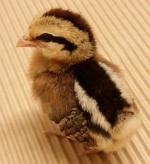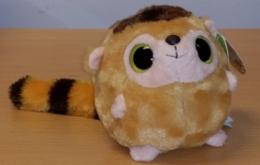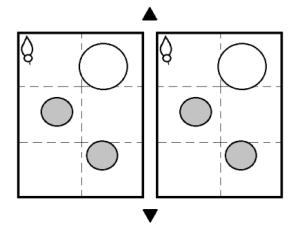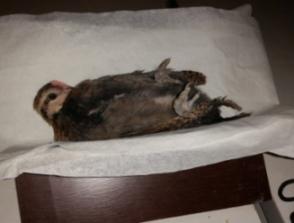Personality testing

In my study I chose to investigate partially how the environment influences cognitive judgment bias in 87 laying hen chicks and partially how personality influences interpretation of ambiguous stimuli in 49 Red Junglefowl chicks. Here I will explain how the experiment where I investigated personality influences was performed.
Three tests were performed to investigate how each chick reacts in a variety of situations associated with fear, this was then used as indications of personality. The tests used were novel arena, novel object and tonic immobility tests, which are explained below.
Novel arena- and novel object test

As a first measure of personality the chicks were subjected to a novel arena. Two novel arenas were built out of solid wood walls with mesh net for roofs. In each arena one large water bell and two small food bells were placed to encourage exploration as the entire arena could not be seen from one point when the bells were blocking the view (figure 2).
Each chicks was put into one arena alone, in the same corner, and left there for ten minutes during which time a camera recorded the chicks' behaviours. After ten minutes had passed the lights were turned of and a novel object (figure 1) was put into each arena, as far away from the chicks as possible. The lights were then turned on and the chicks were left in the arenas for ten more minutes. This constituted the novel object test.
The videos were then decoded where it was scored when the chick started to move, how many times it tried to escape, how many imaginary squares the chick crossed and its behaviour every ten seconds. The behaviours scored was vigilance, eat, activity, stand and other.

Tonic immobility test

Another common way in assessing individual behaviour differences in chickens is to induce them in tonic immobility. This is commonly done by placing the chick in a v-shaped construction, holding it down for a short period of time and then measure latency until it jumps up.
Here I took one chick at a time out from its home pen and placed it on its back in a wooden v-shaped construction (figure 3). I then hold one hand on its chest, gently holding it down while the other hand was placed over the head without applying force for fifteen seconds. I then released the chick gently and started a stop watch. Latency to first head movement and until the chicks jumped up were measured and noted. If the chick jumped up withing three seconds it had not gone into tonic immobility and was given up to three trials to do so. If the chick never stayed down for more than three seconds a time of zero seconds was noted. The longest a chick was allowed to stay in tonic immobility was ten minutes, after which it was given a gentle nudge to the side in order to help the chick get up.
Responsible for this page:
Director of undergraduate studies Biology
Last updated:
05/04/15
